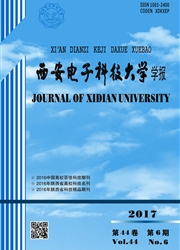

 中文摘要:
中文摘要:
针对二次时频变换中的交叉项影响,研究了一种基于信号分解的 WVD 时频分析的方法,它结合自适应高斯提取法的思想和WVD的优良特性,将信号分解为若干个基于高斯包络的chirp信号分量,然后进行 WVD 时频变换和时频图的综合显示,消除了时频变换中交叉项的影响,也保持了信号自项的时频聚集度。将此时频分析方法应用于雷达信号时频分析,实验结果表明,该分解方法有效地消除了信号交叉项的影响,且保持了原信号的时频聚集度。
 英文摘要:
英文摘要:
Aiming at the influence of cross terms in the secondary time-frequency transformation, we have studied a kind of time-frequency analysis method based on signal decomposition. Combined with Gaussian extraction thoughts and excellent characteristics of WVD, the signal is decomposed into several chirp signal with gauss envelope components. And then through WVD time-frequency transform and comprehensive display of time-frequency diagrams, the influence of cross terms is eliminated with the signal's time- frequency aggregation degrees maintained. The time-frequency analysis method is applied to radar signal analysis. Experimental results show that this decomposition method effectively eliminates the cross terms of the signal, and maintains its time-frequency aggregation degrees.
 同期刊论文项目
同期刊论文项目
 同项目期刊论文
同项目期刊论文
 期刊信息
期刊信息
